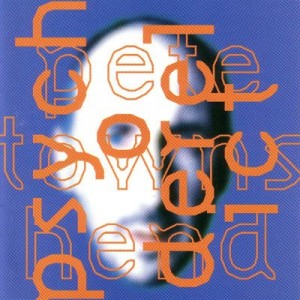
One Of The Two Covers Of "Psychoderelict" (1993)
Pete Townshend’s relationship with the music industry was always defined by a sort of unresolved tension. His one dream project (Lifehouse) clearly spelt that he wanted something from music and from listeners that was not to be. And that tension began pouring into songs by the point “The Who By Numbers” was issued. The jabs were to become full body blows in solo songs like “Jools & Jim”. And the final solo album that he was to release examined the way artists were at the mercy of unscrupulous managers and press agents as thoroughly as only a lifelong insider could.
Named “Psychoderelict”, the disc came out in 1993 and many experts touted it as one of the comebacks of the decade. But it was to perform ingloriously in the charts, and if we leave aside the “Lifehouse Chronicles” boxed set and some compilations (including a “Best Of” package and another title in the “Scoop” series), Pete was to issue no more original material ever again.
Psychoderelict was a conceptual work that took the shape of a CD drama. The story revolved around a ‘60s s musician named Ray High who ended up cocooning himself as the years went by, much to the chagrin of his ruthless manager Rastus Knight. He was desperate to spur Ray into action, and a music journalist named Ruth Streeting devised a way to revive Ray’s career. This involved the creation of a sex scandal that effectively put the name of Ray in everybody’s lips again.
The CD is made up of songs interspersed with dialogue, and the story is completely understandable (and even funny). Ray High (whose name was a direct homage to Ray Davies and Nick Lowe) is entirely convincing as he rallies against the industry and the press, but the true stars are Ruth and Rastus. They are truly two villains you will love to hate. They are hardnosed and truly mercenary. They are also entirely tangible, and the words they speak to each other must have been spoken a billion times over the fates of artists everywhere. At around the time the disc was issued, Pete told Keith Moon’s biographer Tony Fletcher that the music industry “feeds on the corpses of artists”. By that yardstick, Ruth and Rastus come across as the most accomplished undertakers you are liable to ever come across.
The original CD has 21 tracks, including dialogue introductions and a series of instrumentals that represent Ray’s unrealized “Gridlife” project (yes, a completely undisguised “Lifehouse”). A lot of listeners and critics ferociously voiced their dislike for these “peripheral” cuts, and a music-only CD was eventually issued. It had 15 tracks, and it fared no better than the “full” piece in the end. It is also the one edition of the album that is more readily available today.
It is hard not to think about what would have happened if a music-only release of the album had been issued to begin with. Because I consider the union of the music and the lyrics found here as the most harmonious and effective of any solo album of Pete’s. From the autobiographical “English Boy”, to compositions like “Outlive The Dinosaur” and the unavoidable “Now & Then” – songs about old age intoned with a heart that remains evergreen in his capacity to feel joy and wonder at life – the album hits all the heights that it should hit. The press gets a lot of stick (“Let’s Get Pretentious”, “Don’t Try To Make Me Real”), and songs like “Fake It” and “I Am Afraid” insinuate that the demons that haunted Pete in albums like “All The Best Cowboys Have Chinese Eyes” did never go away.
That is pure hindsight, of course. Pete believed in pushing boundaries and transcending limits. He did it all through his career. But indifference can take the steam out of anybody. And “Psychoderelict” signalized the instant when he had enough of trying to satisfy an industry that satisfied him in the slightest. He was speaking to fans directly, and the album’s closing lines (spoken by Ray) “What happened to all that lovely hippie shit” are pronounced so categorically that any person who was lucky enough to grow up in the ‘60s and ‘70s is bound to hang his head in sorrow a little. That’s no negative assessment on the album. Rather, the album offers a negative assessment on the way that music has (un)developed itself. And if it is the final solo album by one of music’s most accomplished critics, so be it. He said all there was to say already, and he did it brilliantly enough. More words would only dilute the message now.
Rating: 8/10

Pingback: Pete Townshend – General Introduction | MusicKO